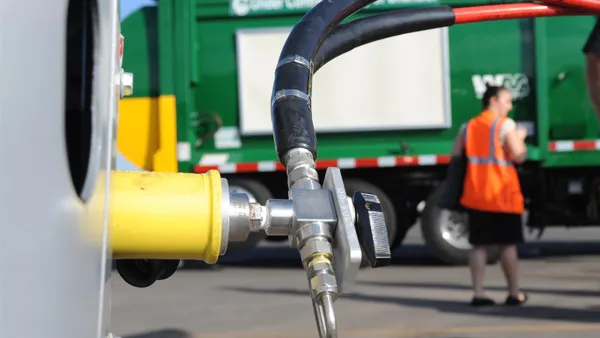Dive Brief:
- In a letter to U.S. EPA Administrator Scott Pruitt, executives from the American Biogas Council, the Advanced Biofuels Business Council, the Biotechnology Innovation Organization and the Coalition for Renewable National Gas called on Pruitt to reverse course on a proposal for setting 2018 goals that would, in their estimation, suppress the demand for cellulosic fuels.
- The proposed renewable fuel volume requirements put forth by the EPA in July cuts the 2017 obligation for cellulosic biofuel from 311 million gallons of fuel to 238 million gallons of fuel in 2018. In the EPA announcement, Pruitt said the agency was "proposing new volumes consistent with market realities focused on actual production and consumer demand while being cognizant of the challenges that exist in bringing advanced biofuels into the marketplace."
- The groups said in their letter that the EPA, in its 2018 RFS proposals, projected volumes for cellulosic biofuel by "looking backwards." They implored the agency to consider a "forward-looking" methodology that considers market activity, projects under construction, investments made to increase volume output and potential volume from pending project registrations.
Dive Insight:
Biogas production has yet to take off in the United States like it has in Europe. In Europe, there are over 10,000 operating facilities producing biogas, compared to around 2,000 in the U.S., according to the American Biogas Council. The U.S. has had other, massive reserves of energy — namely coal and natural gas — so investing in biogas operations hasn't been considered as cost-effective as it may be in areas not as rich in easily-accessed mineral resources.
Having the volume of cellulosic biofuel under the RFS reduced by 78 million gallons could have a big impact on the biogas industry. Maureen Walsh, director of federal policy for the American Biogas Council, told Waste Dive in an email that she didn't have an estimate on just how much the 78 million gallon reduction would cost biogas producers — though she did say it would be a major action.
"The difference between 2017 volumes and 2018 is a decrease of 23%," she wrote. "That's not insignificant."
While only about 2% of current U.S. electricity generation comes from biomass, there are new projects — like in Philadelphia and in Utah — that signal anaerobic digestion in the U.S. could be experiencing a growth period. A sharp decrease in the amount of cellulosic fuel required under the RFS could hurt future growth in that sector.
However, a reduction in the amount of cellulosic fuel required under the RFS would likely feel like a drop in the bucket compared to entirely cutting the RFS program, which some pundits have called for. President Trump has expressed support for the RFS, which the producers noted in their letter to Pruitt. Between Trump's stated support for the RFS — as an "important tool" for American energy independence — and the other public comments that the EPA may receive while determining the renewable volume obligation (RVO), it is unclear whether or not the RVO will continue to call for a 23% decrease in cellulosic fuel levels.









